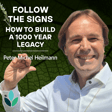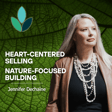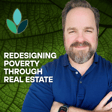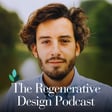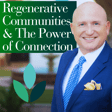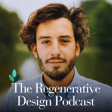
Ep. 25: Catalytic Enabling Officer (CEO) at GPEKS Group – The King of Green Development
“We’ve reached the stage where we need to be more than green, we need to be more than sustainable, which is an upgrade from green, we need to become regenerative.”
The future of sustainability isn’t only about doing less harm—it’s about reversing damage. Regenerative design takes this challenge head-on, integrating nature-positive strategies in construction, energy, and agriculture to create systems that not only sustain but actively improve the environment. By shifting away from conventional materials like concrete, steel, and timber—which contribute heavily to carbon emissions and deforestation—there’s a massive opportunity to build homes and infrastructure that are healthier, longer-lasting, and energy-independent. The key? Using abundant, locally sourced materials like compressed earth bricks and integrating passive solar design, renewable energy, and closed-loop food production systems.
Frederic Pouyot is a pioneer in regenerative construction, advocating for building systems that are cost-effective, durable, and fully energy-autonomous. His projects blend earth-based building techniques with advanced energy solutions, creating communities that generate more energy than they consume. His approach challenges the outdated paradigms of conventional construction, proving that regenerative housing can be built faster, at half the cost, and with a fraction of the environmental footprint. He is also involved in large-scale projects integrating solar energy and sustainable transportation, including a high-speed, elevated rail system.
Frederic is the Dean of the International Real Estate Development Institute, President of E3 Habitat, and CEO of GPEKS. With a background spanning solar energy, international development, and regenerative architecture, he has consulted for governments, utilities, and organizations like the World Bank. Now, he’s turning decades of research into action, developing regenerative housing communities and infrastructure projects across Canada and beyond.
Learn more & connect:
- LinkedIn: https://www.linkedin.com/in/frederic-pouyot
- Earth Construction NGO: E3habitat.org
- Executive Master in Green Land Development: https://sites.google.com/view/iredi/
- Development Company: gpeks.com
- “The Ploughman’s Folly” by Edward H. Faulkner
https://www.goodreads.com/book/show/10241734-plowman-s-folly
- “Common Ground” documentary
https://www.12lawsofnature.com/

